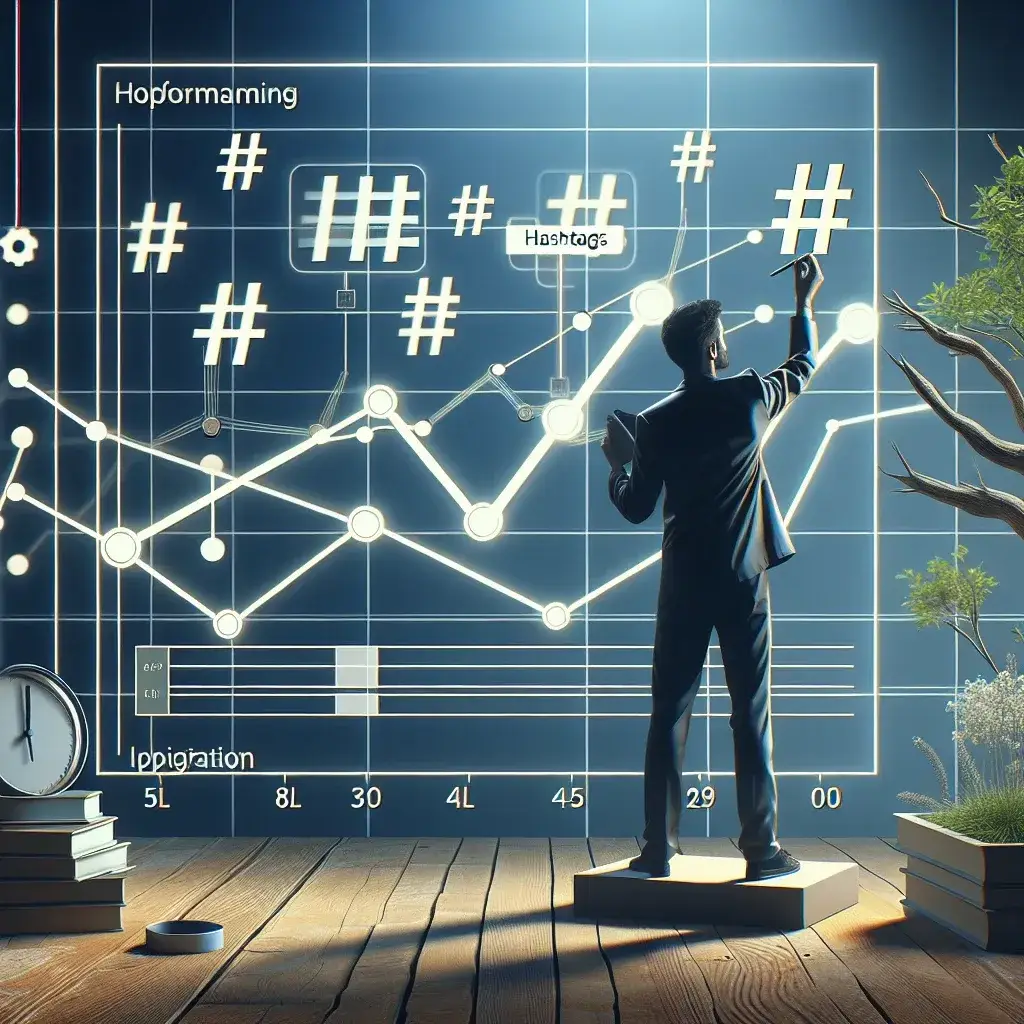Understanding the Power of Instagram Hashtag Analytics
In the rapidly evolving landscape of social media marketing, Instagram hashtag performance tracking has emerged as a critical component for businesses and content creators seeking to maximize their digital footprint. The strategic use of hashtags can dramatically increase your content’s visibility, engagement rates, and overall reach on the platform. However, without proper tracking and analysis, even the most carefully crafted hashtag strategies may fall short of their potential.
Modern Instagram hashtag performance trackers provide invaluable insights into how your chosen tags are performing across various metrics. These sophisticated tools analyze engagement rates, reach statistics, impression data, and audience demographics to paint a comprehensive picture of your hashtag effectiveness. By leveraging these insights, marketers can make data-driven decisions that significantly improve their content performance and return on investment.
The Science Behind Hashtag Performance Measurement
Effective hashtag performance tracking involves monitoring multiple key performance indicators (KPIs) that collectively determine the success of your Instagram strategy. Reach and impressions represent the foundational metrics, indicating how many unique users have seen your content and the total number of times it has been displayed. These metrics provide crucial baseline data for understanding your content’s initial visibility.
Engagement metrics, including likes, comments, shares, and saves, offer deeper insights into how audiences interact with your hashtagged content. High engagement rates typically indicate that your hashtags are successfully connecting your content with interested and relevant audiences. Additionally, tracking follower growth attributed to specific hashtags helps measure the long-term impact of your tagging strategy on audience development.
Advanced performance trackers also analyze hashtag competition levels and trending patterns. Understanding which tags are oversaturated versus those with optimal competition levels enables creators to identify untapped opportunities for increased visibility. This competitive analysis is essential for developing hashtag strategies that balance high-volume tags with niche-specific alternatives.
Essential Features of Professional Hashtag Tracking Tools
Professional Instagram hashtag performance trackers incorporate several sophisticated features designed to provide comprehensive analytics and actionable insights. Real-time monitoring capabilities allow users to track hashtag performance as it happens, enabling quick adjustments to ongoing campaigns. This immediate feedback loop is particularly valuable for time-sensitive content or trending topic engagement.
- Comprehensive analytics dashboards displaying reach, impressions, and engagement metrics
- Hashtag suggestion engines based on performance data and industry trends
- Competitor analysis tools for benchmarking against industry leaders
- Historical performance tracking for identifying seasonal patterns and trends
- Automated reporting features for streamlined performance reviews
- Integration capabilities with other social media management platforms
Advanced tracking platforms also offer sentiment analysis features that evaluate the emotional tone of comments and interactions generated by specific hashtags. This qualitative data provides valuable context for quantitative metrics, helping creators understand not just how many people are engaging, but how they feel about the content.
Strategic Implementation of Hashtag Performance Data
The true value of hashtag performance tracking lies in the strategic application of collected data to optimize future content strategies. Successful implementation begins with establishing clear objectives and KPIs that align with broader marketing goals. Whether focusing on brand awareness, lead generation, or community building, different objectives require different tracking approaches and success metrics.
Data-driven hashtag optimization involves regularly analyzing performance trends to identify patterns and opportunities. High-performing hashtags should be incorporated into future content strategies, while underperforming tags should be evaluated for potential modifications or replacement. This iterative approach ensures continuous improvement in hashtag effectiveness over time.
Seasonal and temporal analysis represents another crucial aspect of strategic implementation. Many hashtags experience cyclical performance patterns related to holidays, industry events, or cultural phenomena. By identifying these patterns through historical data analysis, creators can proactively adjust their hashtag strategies to capitalize on predictable engagement spikes.
Maximizing ROI Through Advanced Analytics
Professional marketers leverage hashtag performance data to calculate and optimize return on investment across their Instagram marketing efforts. By correlating hashtag performance with business outcomes such as website traffic, lead generation, and sales conversions, organizations can quantify the direct impact of their social media strategies.
Advanced analytics platforms enable attribution modeling that tracks customer journeys from initial hashtag discovery through final conversion. This comprehensive view of the customer acquisition process helps marketers understand which hashtags contribute most effectively to business growth and revenue generation.
A/B testing frameworks integrated with hashtag tracking tools allow for systematic experimentation with different tagging strategies. By testing variations in hashtag quantity, specificity, and thematic focus, creators can identify optimal approaches for their specific audience and content type.
Common Pitfalls and Best Practices in Hashtag Tracking
Despite the powerful capabilities of modern hashtag performance trackers, several common mistakes can undermine their effectiveness. Over-reliance on vanity metrics such as follower counts or total impressions without considering engagement quality represents a frequent oversight. Meaningful hashtag performance evaluation requires a balanced approach that considers both quantitative reach and qualitative engagement.
Another common pitfall involves insufficient tracking duration for accurate performance assessment. Hashtag performance can vary significantly based on posting time, day of week, and seasonal factors. Comprehensive evaluation requires extended tracking periods that capture these natural variations and provide statistically significant data samples.
Successful hashtag tracking also requires regular tool calibration and validation. Platform algorithm changes, feature updates, and data collection modifications can impact tracking accuracy over time. Regular verification of tracking data against native Instagram analytics ensures continued reliability and accuracy in performance measurement.
Future Trends in Instagram Hashtag Analytics
The evolution of Instagram hashtag performance tracking continues to accelerate with advances in artificial intelligence and machine learning technologies. Predictive analytics capabilities are beginning to emerge, enabling creators to forecast hashtag performance before publication and optimize content strategies proactively.
Integration with broader social media ecosystems represents another significant trend, with tracking tools increasingly offering cross-platform analytics that provide holistic views of hashtag performance across multiple social networks. This comprehensive approach enables more sophisticated audience analysis and content optimization strategies.
Privacy considerations and data protection regulations are also shaping the future of hashtag tracking tools. Enhanced user consent mechanisms and transparent data usage policies are becoming standard features as platforms and tool providers adapt to evolving privacy expectations and regulatory requirements.
Conclusion: Transforming Instagram Strategy Through Data-Driven Hashtag Optimization
Instagram hashtag performance tracking represents a fundamental shift from intuitive to analytical social media marketing approaches. By leveraging comprehensive tracking tools and implementing data-driven optimization strategies, creators and businesses can significantly improve their content performance, audience engagement, and overall marketing effectiveness.
The key to successful hashtag performance tracking lies in selecting appropriate tools, establishing clear objectives, and maintaining consistent analysis practices. As the social media landscape continues to evolve, those who embrace systematic hashtag optimization through performance tracking will maintain competitive advantages in reaching and engaging their target audiences.
Success in modern Instagram marketing requires more than creative content and intuitive hashtag selection. It demands sophisticated tracking, analysis, and optimization capabilities that transform social media efforts from guesswork into strategic, data-driven initiatives that deliver measurable results and sustainable growth.


